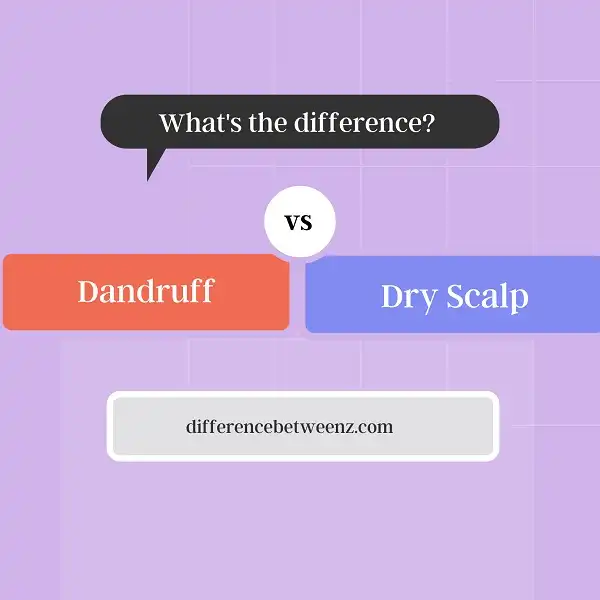Dandruff and dry scalp are two of the most common scalp problems. They both involve flakes or patches on the scalp, but they are caused by different things and require different treatment methods. In this post, we’ll take a closer look at the difference between dandruff and dry scalp, and we’ll provide some tips on how to treat each condition. Keep reading to learn more!
What is Dandruff?
Dandruff is a common skin condition that affects the scalp. It is characterized by the presence of white or greyish flakes of skin on the hair and shoulders. Dandruff can be caused by a number of factors, including dry skin, oily skin, sensitivity to certain hair products, fungal infections, and infrequent shampooing. Treatments for dandruff include over-the-counter shampoos, medicated shampoos, and topical anti-fungal creams. In most cases, dandruff is not a serious condition and can be effectively managed with self-care measures. However, in rare cases, dandruff may be a symptom of a more severe underlying condition such as psoriasis or eczema. If dandruff does not improve with self-care measures, it is important to see a healthcare provider for further evaluation.
What is a Dry Scalp?
- A dry scalp is a condition characterized by itching and flaking of the skin on the scalp. It can be caused by a number of factors, including cold weather, dehydration, and using harsh hair products. Dry scalp is usually not a serious condition, but it can be uncomfortable and embarrassing. The good news is that there are a number of things you can do to treat it. Here are some tips for getting rid of a dry scalp:
- Use a mild shampoo: Shampoos that contain harsh chemicals can strip away the natural oils from your scalp, making it more prone to drying out. Instead, look for shampoos that are designed for sensitive skin or those that contain moisturizing ingredients such as aloe vera or coconut oil.
- Avoid hot showers: While a hot shower may feel good on a cold day, it can actually make your dry scalp worse. Hot water can strip away the natural oils from your skin, so stick to lukewarm water instead.
- Use a humidifier: A humidifier can help to add moisture to the air, which can in turn help to prevent your scalp from drying out.
- Drink plenty of water: Staying hydrated is important.
Difference between Dandruff and Dry Scalp
- At first glance, dandruff and dry scalp may seem like very similar conditions. Both affect the scalp, and both can lead to flakes of dead skin or other visible symptoms. However, there are some key differences between these two conditions that are important to understand in order to effectively treat them.
- The primary difference is that dandruff is actually caused by a type of fungus known as Malassezia globose, whereas dry scalp usually arises due to environmental factors such as exposure to the sun or excessive use of heating or styling products. In addition, while dandruff often manifests as larger white or yellow flakes that stand out against dark hair, dry scalp typically leads to more subtle symptoms such as itchiness, tightness, and flakiness.
- For this reason, it is important to be able to properly diagnose the underlying cause of your condition before you begin seeking treatment. If you suspect you have dandruff, then over-the-counter anti-dandruff shampoos may help. For dry scalp issues, try using a moisturizing shampoo or an oil treatment before washing your hair.
Conclusion
So, what’s the difference between dandruff and dry scalp? The main difference is that dandruff is caused by a fungus while dry scalp can be caused by many things, including dehydration, harsh chemicals, or over-washing your hair. If you are experiencing any of the symptoms of dandruff—including itching, flaking, or redness on the scalp—it’s best to see a doctor get a proper diagnosis and treatment. Dry scalp, on the other hand, can usually be treated with some simple at-home remedies like using a humidifier to increase moisture levels in the air or applying a moisturizing conditioner after shampooing.


